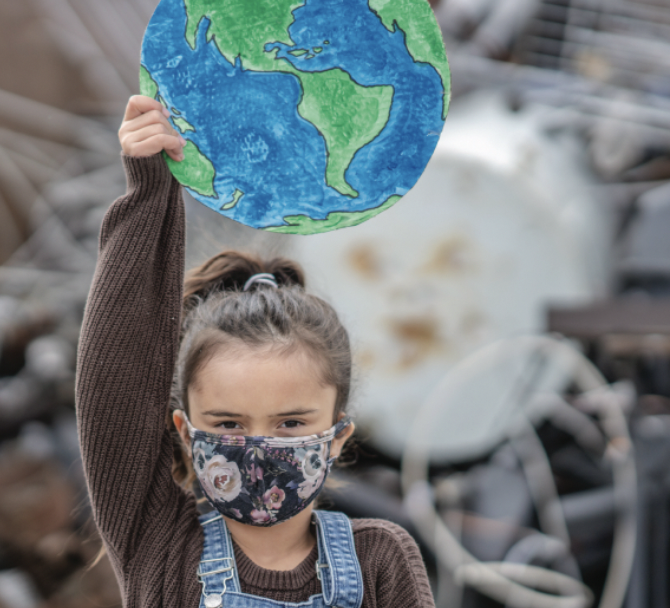
Tools to Track Gender Parity in The Environment and The Displacement of People After Natural Disasters
There is a dearth of gender data in the environmental sector. Without such information, policymakers, researchers, and development practitioners are unable to address how and where women and girls are differentially affected by a lack of access to water and sanitation, lack of rights to agricultural land, the impacts of natural disasters, or even how many women participate in environmental decision-making. Some of this information is difficult to obtain with sex disaggregation because the data are collected at the household or higher levels of aggregation. To fill these gaps and recognize the roles of women in managing the environment and responding to natural disasters, new sources and innovative methods of data collection are needed.
Developing stronger linkages of gender and climate change can better show how women and girls are impacted by climate change.
Highlighting The Solutions
Using the Gender Climate Tracker to understand the inclusion of women leaders pertaining to climate change policies
The Women’s Environment and Development Organization’s (WEDO) Gender Climate Tracker is a powerful tool to identify women leaders in decision making processes and to track the inclusion of gender or gender mandates in national climate policies. Users can filter national climate policies to see if there are references to gender equality, gender mainstreaming, gender balance, or the vulnerability of women; users can also browse for data on the participation of women in climate change policy; and users can access country profiles for summary findings on gender in policy or the role of women decision makers. The Gender Climate Tracker—essentially serving as a “watchdog”—can ignite efforts for greater gender parity in climate-related decision making processes and the inclusion of gender in national policies. Developing stronger linkages of gender and climate change can pave the way for greater data collection efforts to monitor how women and girls are impacted by climate change.
Using Facebook’s Gender Disaggregated Displacement Maps
By enabling location services on a smartphone, Facebook Displacement Maps can gather information on users in the weeks and months after a natural disaster to assess displacement or resettlement of a population. Since Facebook already collects data on the gender of users, the data can also show how natural disasters can differentially impact men and women. It is important to acknowledge the potential biases in data as this relies on mobile phone ownership and usage, and there are existing gender gaps in ownership and usage of mobile phones. Additionally, other sampling biases can arise when economically vulnerable and other marginalized groups do not have adequate access to mobile phones and internet connectivity.
Other environment solutions and findings
Out of 142 solutions in the inventory, 21 solutions are relevant to the environment, where 13 of those solutions solely focus on the environment and the remaining eight solutions over multiple themes where environment is a component. Of the 21 solutions, nine solutions focus on both data production and use; seven solutions focus solely on data production; and five solutions solely focus on data use. The effort to build the inventory did not yield many solutions on improving the availability of sex disaggregated data on the built environment, such as measures of indoor air pollution and its effect on families, characteristics of the population living in informal settlements. Other environment solutions in the inventory include:
- Using a mixed-methods approach of quantitative and qualitative studies to develop a gender-analysis tool in disaster risk management
- Developing a gender-inclusive assessments to understand the needs and vulnerabilities of women and men for better disaster risk
- Following guidelines set forth by 50×2030 on survey tools for monitoring SDG 5.a.1: measuring gender parity in ownership and tenure rights over agricultural land
What Will It Take to Scale Up Environment Solutions?
Better data governance, data sharing between new sources of data, and existing official statistics are key.
Solutions such as the Gender Climate Tracker and Disaggregated Disaster Maps rely on sharing information between governments and watchdog organizations and private sector companies and researchers. Due to the dearth of administrative data and the lag of responsiveness of surveys in times of crises, environment data are currently more likely to be sourced from new and alternative data sources, such as social media companies, geospatial databases, local governments, or other community-level initiatives. The goal of better data governance is therefore to include these relatively new sources of data into the routine generation of official statistics on women and girls and the environment.

How Will Applying These Solutions Impact Gender Data?
The solutions associated with the environment would help produce more gender data in the aftermath of disasters, for land rights and agriculture, and on leadership in government service. In the inventory, the solutions that map the impact on women and girls in the aftermath of disasters will be crucial in the age of climate change and will also complement efforts to track Target 1.5 of the SDGs on improving resilience. The solutions to improve mapping of land to link to registries on landholdings are linked to stronger property rights for women which will help them be more economically secure. These data will also help monitor progress on SDG target 1.4 on equal access to economic resources, and SDG target 5.a on equal access to land. Furthermore, the solutions that address the built environment are covered under SDG targets 6.1 and 6.2 on safe and accessible water and sanitation hygiene. Though the need for better data on leadership is not confined to the environment, the solutions listed here can improve the availability of data on women involved in climate policies and thereby satisfy the goals of many countries in their national plans on gender equality and sustainable development. These data will also help monitor progress on SDG target 5.5 on equal participation in leadership positions.
To access a full list of sources for the above, click here. To view the entire report, follow this link.
Close Gender Data Gaps
Explore more solutions that are practical and scalable across multiple development sectors.

